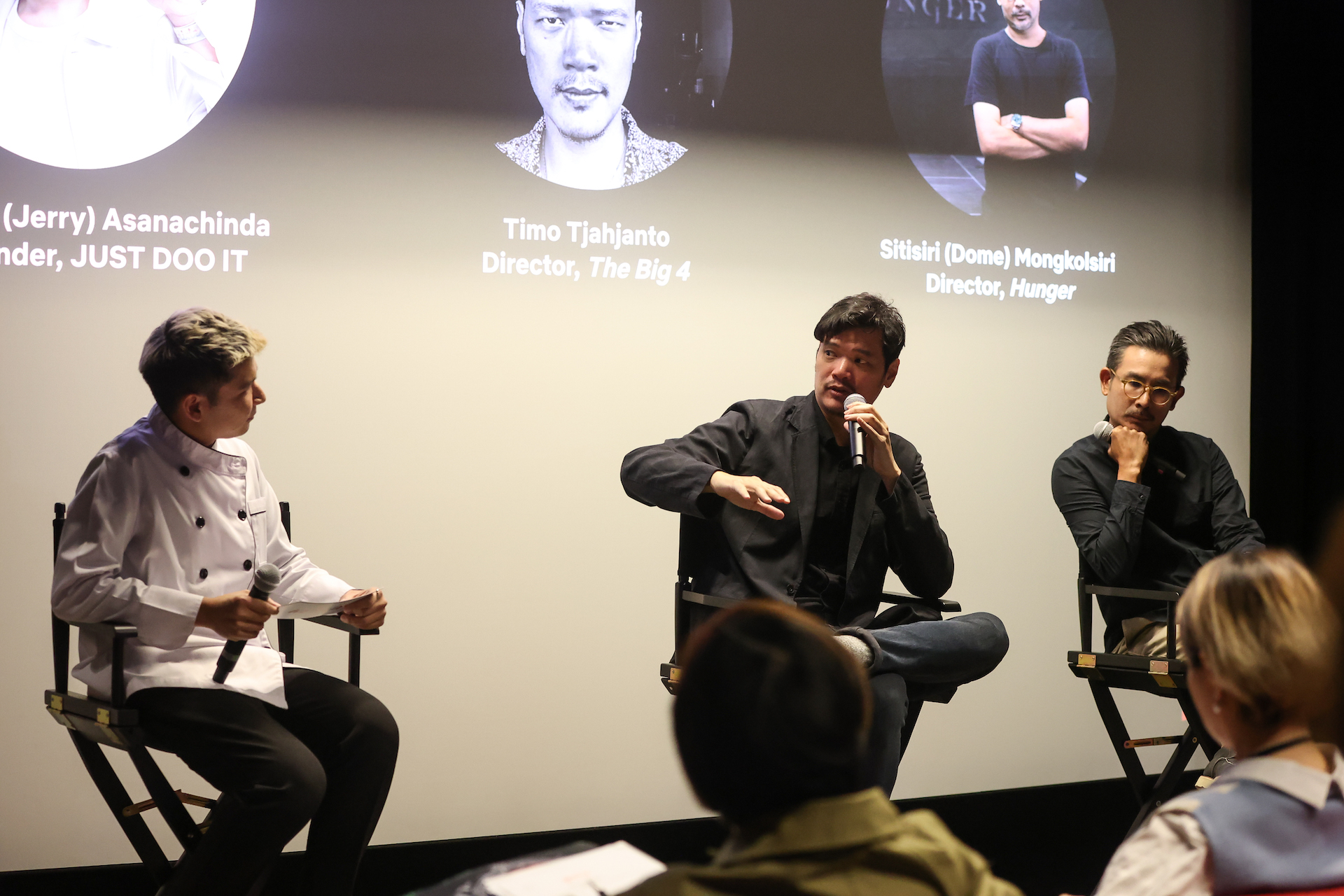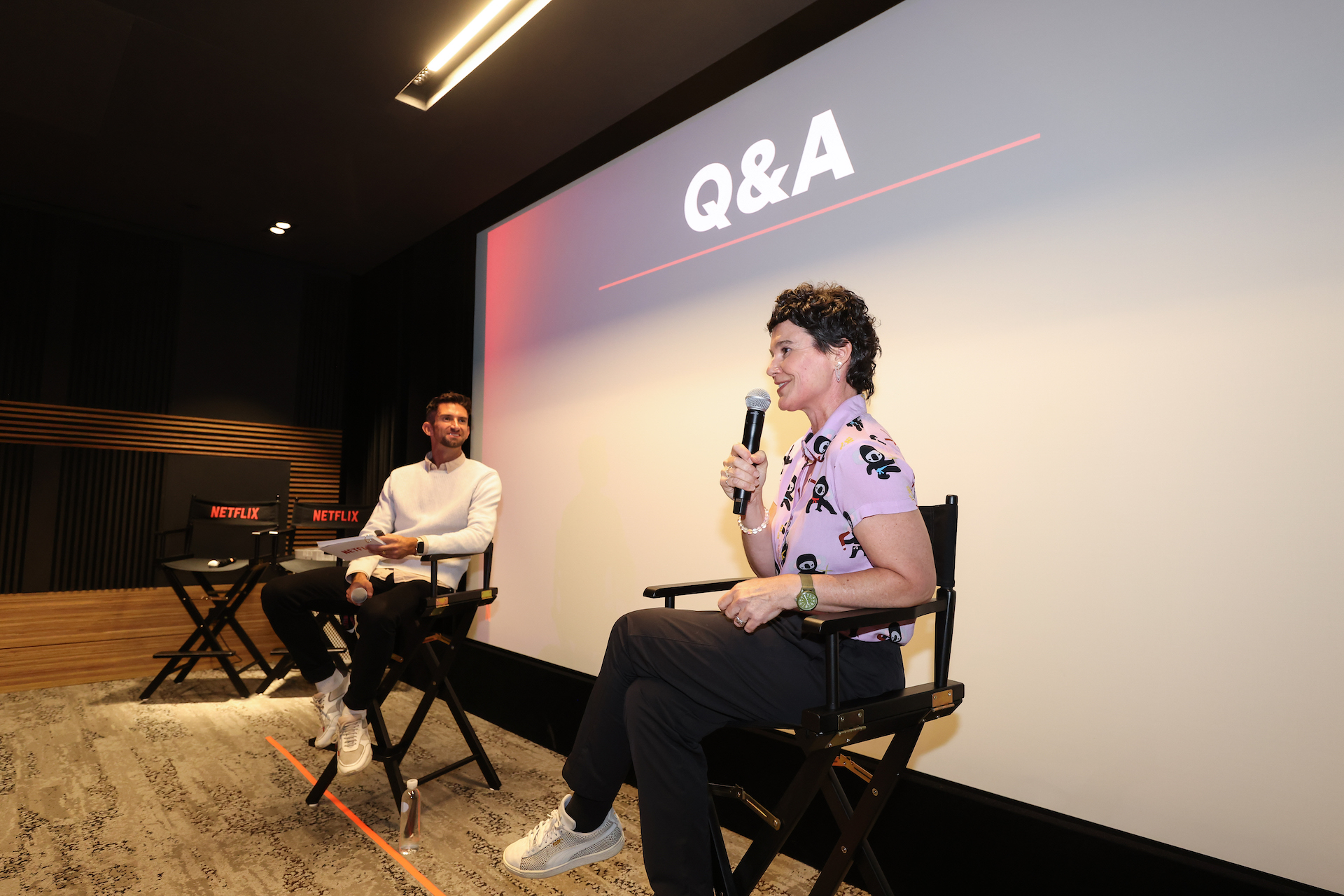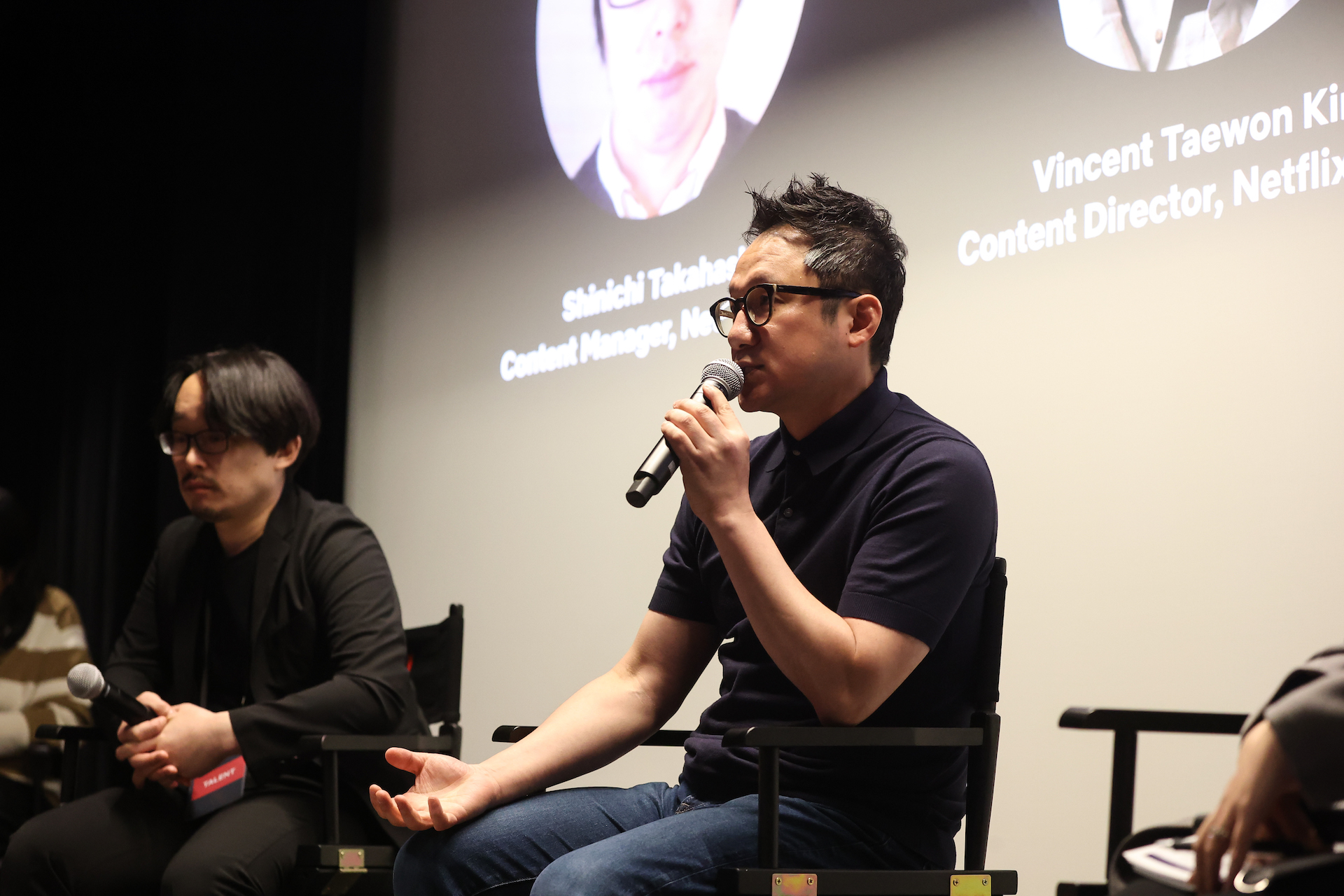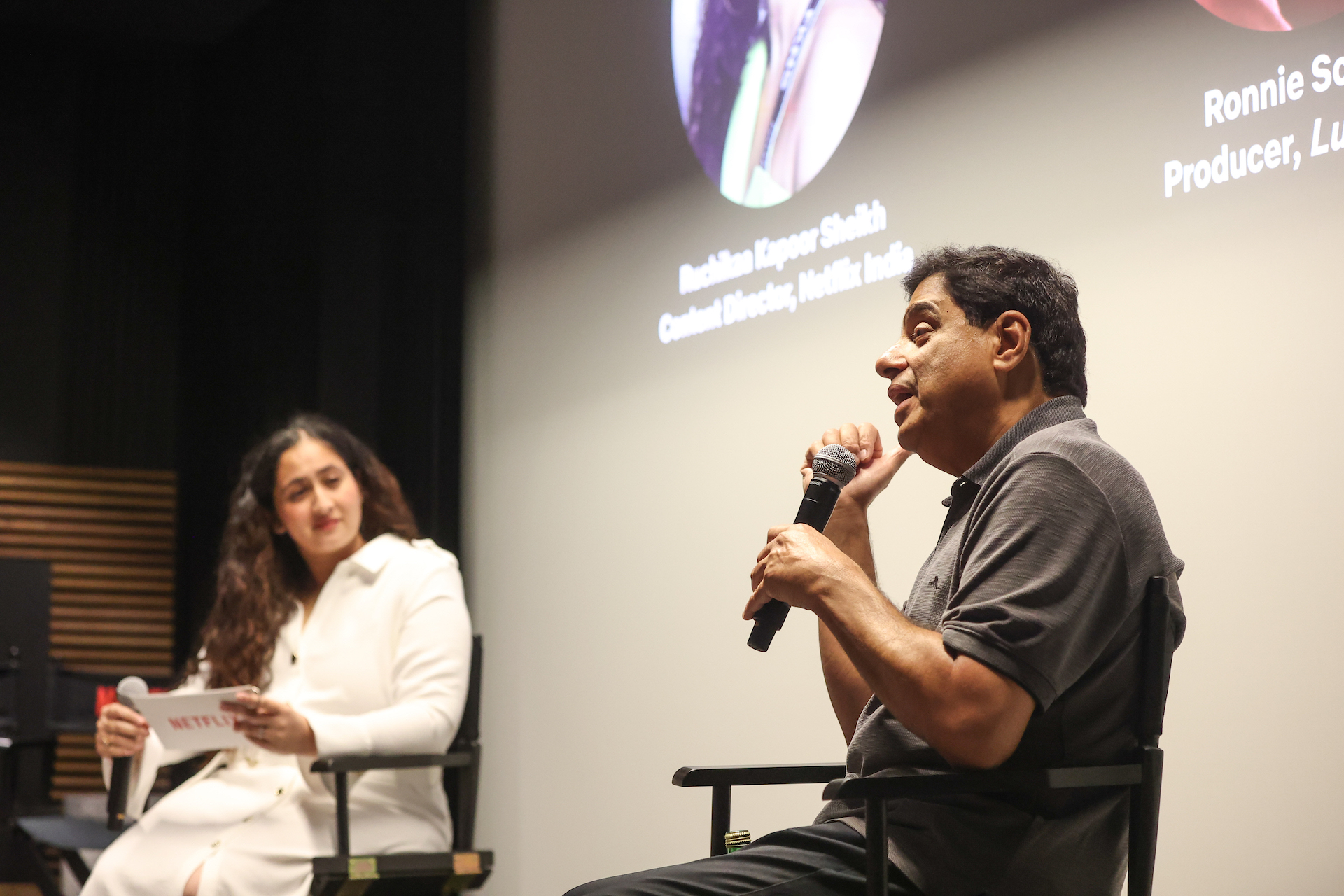To celebrate the growing popularity of films from Asia Pacific, Netflix gathered top creators from the region to discuss what made those stories tick.
Hosting the first APAC Film Showcase in Seoul last Wednesday, Minyoung Kim, Vice President of Content (APAC excluding India), declared 2022 “the best year yet” for APAC movies, which were consistently among the most-watched non-English films globally for almost every week last year. More than 80 APAC films featured on the Netflix Top 10 weekly global Non-English Film list in 2022, with those from India, Indonesia and Korea taking the No. 1 spot.
Held ahead of the upcoming premiere of hotly anticipated Korean action flick Kill Boksoon, which premieres March 31 only on Netflix, the event gave members of the press and entertainment industry from across APAC the chance to hear directly from Netflix and creators about how they bring movies to life.

(from left) YouTuber Chatchai Asanachinda moderated the conversation with directors Timo Tjahjanto and Sitisiri Mongkolsiri on making films in Southeast Asia.
Local story with universal themes
According to Vincent Taewon Kim, Director of Content for Netflix Korea, when Netflix looks for a story to invest in, the focus is always on the story, whether it will entertain or bring joy to audiences.
And in telling the story, the emphasis is on being authentic and faithful to the home audience by including local issues or colloquialisms. Ruchikaa Kapoor Sheikh, Director of Content for Netflix India, pointed out that this has been key to storytelling in India, which has the highest viewing of films on Netflix globally.
“Even though a lot of our local titles travel globally, our focus is always local to local, and always for local audiences,” she added.

Producer Anna McLeish (right) talked with Netflix Communications Manager Jeff McBride about how a country’s distinctive voice, such as Australian slang, is embedded in films made in that country.
But good stories tend to have universal themes that everyone can relate to, such as love or social inequality. “With Hunger, I was using food to talk about human desire and ambition. I made the film for everyone because we all face similar issues. It just happened to have Thai actors,” said Thai director Sitisiri Mongkolsiri at the event.
The popularity of APAC films can also be attributed to the shift in consumer preferences, where language is not as much a barrier as before, especially with the younger generation. “A non-English film is no longer considered arthouse,” said Anna McLeish, producer of forthcoming Australian horror film Run Rabbit Run. “As long as it’s really good, people will watch it.”
Free to tell the story they want to the world
During the three-hour event, all the creators mentioned creative freedom and how Netflix enables them to bring their creative visions to life, including films that are different from mainstream blockbusters such as Hunger, Lust Stories, and The Big 4, which became Netflix’s most-watched Non-English film in December.
“Sometimes creators are limited by the environment. We want to remove this limit, so that the creators can maximize their imagination,” said Shinichi Takahashi, Manager of Content for Netflix Japan.
Netflix also works closely with creators to make the best version of their film. Half of the budget for Korean sci-fi film Jung_E went into visual effects and computer-generated imagery.
“We resonated deeply with the story, which is why we made this bold investment,” said Kim. “And we received many positive responses from the industry over the big bet we took and for respecting the creative vision.”

Content Manager of Netflix Japan Shinichi Takahashi (left) and Content Director of Netflix Korea Vincent Taewon Kim reiterated Netflix’s commitment to making a variety of must-watch films.
Across the region, creators are seeing the advantages of sharing their films with audiences via streaming. Run Rabbit Run, which was screened at the Sundance Festival in January, will premiere later this year on Netflix.
“We make films to be seen by audiences, and Netflix has this exceptional reach globally. Typically, it can take up to 18 months for an independent film to get around the world through film festivals. With Netflix, you can get the film out to audiences in more than 190 countries pretty much simultaneously,” said McLeish at the event.
Director of The Big 4 Timo Tjahjanto added: “Previously when films are distributed overseas in cinemas, we can’t really see how well it does. With Netflix, I can see in real time how the film is working out in South Africa, Argentina or Thailand.”
Contributing to the local film industry
Sitisiri shared he was initially cautious about Netflix entering the Thai market, wondering if it would hurt or help the film industry.
“In the last three, four years, we see that Netflix has truly helped those in the industry, especially through their best practices in production, so that we have enough budget and time to complete a high-quality film,” he explained.

Producer Ronnie Screwvala (right) discussed his prolific Netflix journey with Ruchikaa Kapoor Sheikh, Director of Content for Netflix India.
Ronnie Screwvala, producer of six projects with Netflix including the award-winning Lust Stories and Mission Majnu, also noted that Netflix has widened the market for storytelling and scriptwriting. He explained that, previously, a film would have been led by a director who worked with a scriptwriter to flesh out the story. But now, anyone with a good story, including book adaptations, can get it told.
At the end of the day, he sees Netflix playing a key role in keeping a story evergreen.
“We’re here to tell stories that are relevant 10, 20 years down the road. Instead of the film ending up in libraries or catalogs, it is now out there for permanent consumption. That’s the beauty of it.”
Jeff McBride
Content Communications Manager, APAC
jmcbride@netflix.com
Taken from: https://about.netflix.com/en/news/apac-film-showcase-2023





